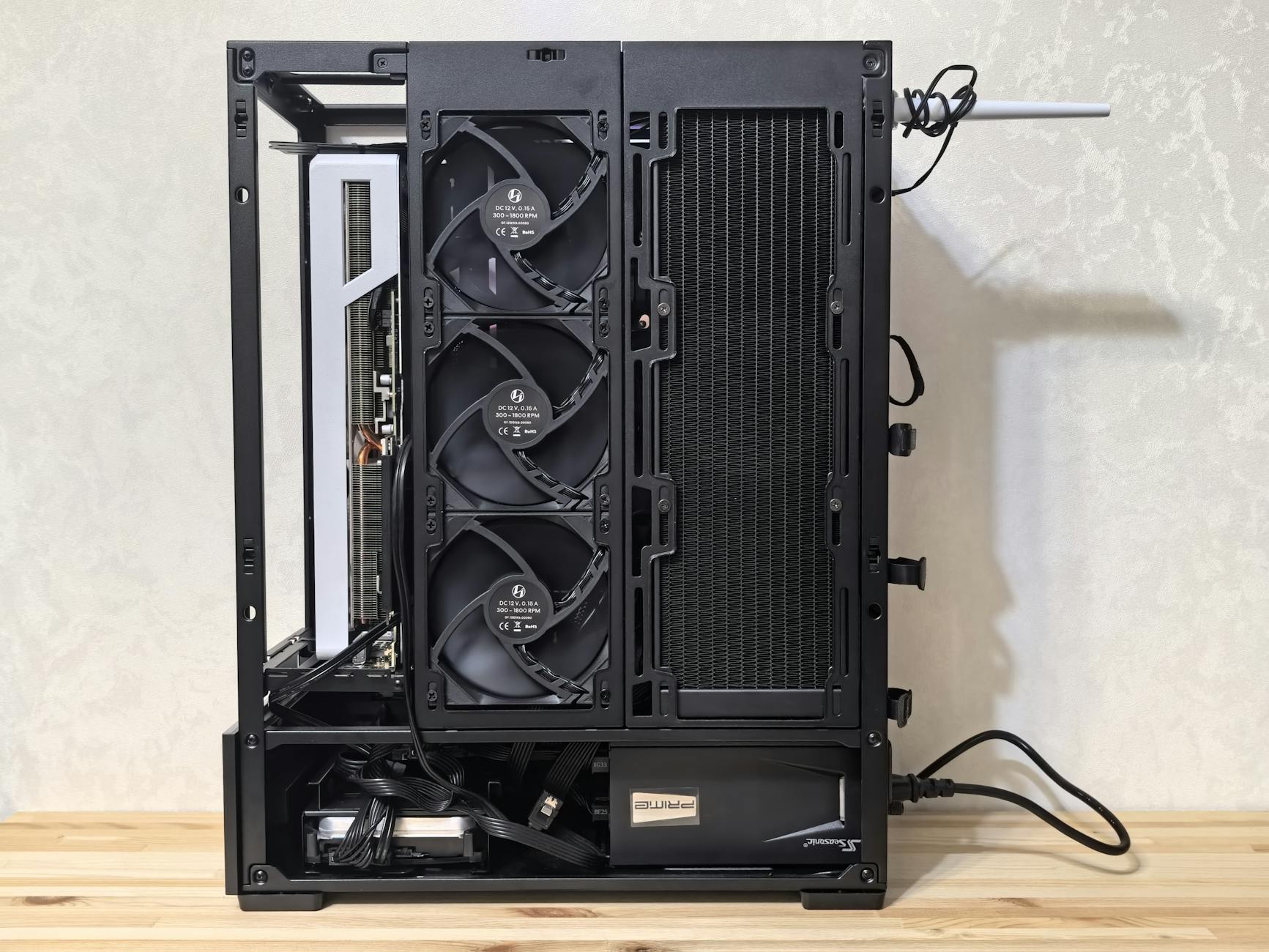Your cart is currently empty!
That sudden, unsettling feeling when you press the power button and… nothing. No lights, no fan noises, no startup screen. Just a dark, silent machine. It’s a common and often terrifying scenario for any computer owner. Your entire digital life—work, photos, documents—is suddenly inaccessible.
At AS Computer Solutions here in Onoway, we receive calls about this issue all the time. The good news? A dead computer isn’t always a sign of a major, expensive failure. In many cases, the fix is surprisingly simple. Before you panic and start thinking about buying a new system, take a deep breath and follow this step-by-step guide. We’ll help you diagnose the problem, from the most obvious to the more technical, so you can figure out if it’s a quick fix or a job for the pros.
✅ Step 1: Rule Out the Basics (The Power Check)
Most “dead computer” problems are, in fact, power-related. Let’s start with the obvious but often-overlooked culprits.
🔄 Check the Power Connections
- Is it plugged in? Yes, seriously. Make sure the power cable is securely plugged into both the back of your computer and the wall outlet or power strip.
- Check the power strip/surge protector: Is the power strip turned on? Is it a good one? Try plugging your computer directly into a wall outlet to rule out a faulty power strip.
- Is the outlet working? Plug a lamp or phone charger into the same outlet to confirm it has power.
- For laptops: Is the battery charged? Try plugging in the charger and leaving it for a while before attempting to turn it on again. Check if the charger’s indicator light is on.
🔌 Check the Power Supply Switch
- Desktop PCs: Many power supplies have a small power switch on the back, next to where the power cable plugs in. Make sure this switch is in the “On” or “I” position. It’s easy to accidentally flip this switch when moving the computer.
🛠️ Check the Monitor
- Is it just the screen? Sometimes the computer is on, but the monitor is the issue. Look and listen for any signs of life from the computer itself: whirring fans, blinking lights, or beeping sounds.
- Check the monitor’s power: Make sure the monitor is plugged in and turned on. Check the video cable connection at both the monitor and the back of the computer. Try a different video port on your computer’s GPU or motherboard.
🛠️ Step 2: Targeted Troubleshooting (Hardware Diagnosis)
If the basic power checks don’t work, the problem might be an internal hardware failure. Here’s how to safely troubleshoot a few common issues.
📌 Scenario 1: A System with Power, but No Display
If you hear fans spinning or see lights on the motherboard, but nothing shows on the screen, it could be a memory (RAM) or graphics card issue.
Try This:
- Reseat the RAM:
- Unplug the computer from the power source.
- Open the computer case (on desktops).
- Locate the RAM sticks (long, thin circuit boards).
- Unclip and remove each RAM stick one by one.
- Gently wipe the gold contacts on the sticks with a soft cloth.
- Firmly push them back into their slots until you hear a click.
- Reseat the Graphics Card:
- For a desktop PC, locate the graphics card and make sure it is firmly seated in its slot and that any power cables from the power supply are securely connected.
⚠️ Scenario 2: The Computer Powers On, Then Immediately Shuts Down
This is often a sign of a power supply unit (PSU) or motherboard failure, or sometimes, overheating.
Try This:
- Unplug unnecessary peripherals: Disconnect everything except the monitor, mouse, and keyboard. A faulty peripheral can sometimes cause a power-on-shutdown loop.
- Check for overheating: If you can get into the BIOS (by pressing Del, F2, or F10 during startup), check the CPU temperature. Dust buildup can lead to overheating. If you suspect overheating, power down the system and let it cool.
🔄 Scenario 3: Nothing Happens at All (The “Dead” Machine)
If there is absolutely no sign of life—no fans, no lights, no sound—the problem is almost certainly a power supply or motherboard failure.
Try This:
- Test the Power Supply: This requires a power supply tester and a bit of technical knowledge.
- If it’s a laptop: The most common culprit is a faulty battery or a worn-out AC adapter/charger. Try a different adapter (if you have a compatible one) to see if it powers on.
🧰 Still No Luck? Bring It to the Pros
If you’ve gone through all the steps above and your computer is still unresponsive, don’t stress—AS Computer Solutions is here to help. Attempting more complex repairs without the right tools and expertise can cause more damage.
We can:
- Perform advanced diagnostics to pinpoint the exact cause of the power failure.
- Test the Power Supply Unit (PSU) and all other components.
- Safely repair or replace a faulty motherboard, CPU, or other internal parts.
- Recover data from a non-booting drive (where possible).
- Recommend reliable replacement options that suit your needs.
🏡 Local. Reliable. Ready to Help.
Serving Onoway and surrounding communities, AS Computer Solutions is your go-to for friendly, affordable tech support. We know how vital your computer is, and we’re committed to getting it back to full working order quickly and efficiently.
Don’t let a dead computer get you down. Try the steps above first, and if you’re still stuck, give us a shout. We’ll get your system—and your productivity—back on track.
Call or visit us today: 📞 (780) 967 0215 🌐 www.site.ascsonoway.com 📍 Onoway, Alberta 📧 [email protected]


Leave a Reply